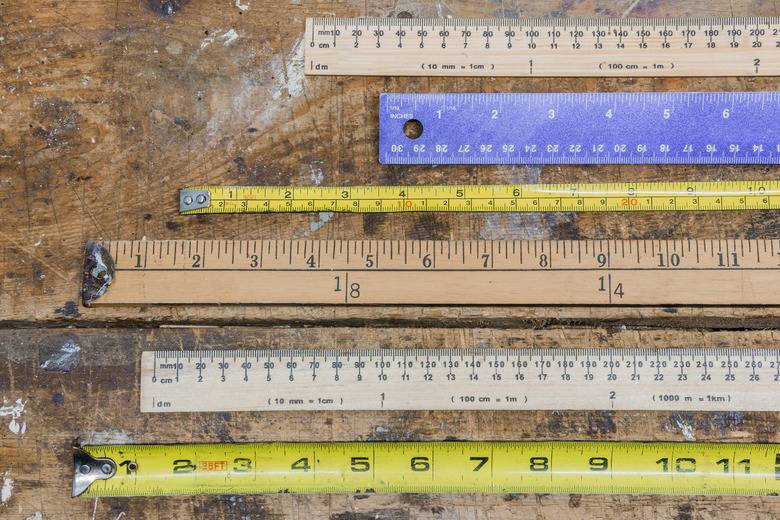In the United States, most people still use a version of the old “imperial” system of measurement, called the US customary unit system, which calculates distance in inches, feet and yards. The system works well, but it is not intuitively logical and is based on very old Roman expressions of distance. In the sciences, and commonly in most of the rest of the world, people use the metric system, which uses a base 10 system and gives us a meter stick rather than a yardstick.
US Customary Unit System
People often refer to the US Customary Unit System as the “imperial system,” but there are some differences in weights and volume measurements. However, in terms of units of length, both systems use inches, feet and yards. The basic unit of the inch (in.) sometimes is divided into fractions. For instance, an object might be 1 1/2 or 7 3/8 inches long. There are 12 inches in a foot (ft.) and 3 feet in a yard. Thus, a yardstick is 36 in. or 3 ft. long.
Metric System
The metric system also is called the “standard international” system. It is based on a base 10 concept and its basic units are millimeters (mm), centimeters (cm), decimeters (dm) and meters (m). There are 10 decimeters in a meter, 10 centimeters in a decimeter and 10 millimeters in a centimeter.
Equivalencies
A yard and a meter are roughly equivalent, although a meter is slightly larger. A meter is 1.09361 yards, or 1 yard and 0.28 in. Given this, it is not surprising to find a meter stick with metric and imperial unit markings. One in. = 2.54 cm, but for quick mental conversions, many people round down to 2.5 cm when estimating.
Which to Use?
For science, metric not only is the official standard, but also the superior system. Its base 10 system is consistent with our base 10 decimal system and is universally recognized. However, in all other applications either system will do fine. Moreover, in the United States it can be very impractical to use metric. For example, in construction, sections of commercial wood products are cut in accordance with the US system and building plans use imperial units.

